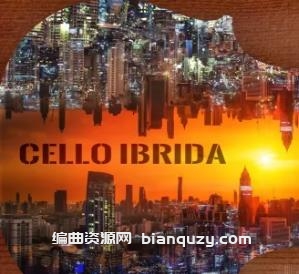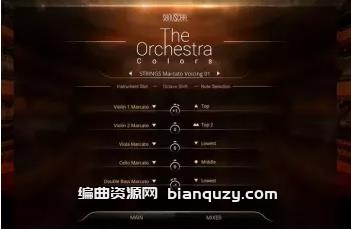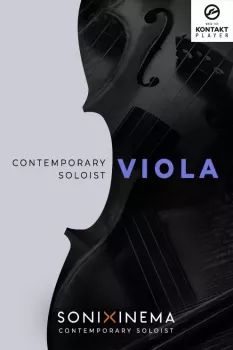
KONTAKT – 4,21 GB
大提琴Ibrida包含不同类型的采样和声音设计技术在一个先进的GUI。这个概念依赖于不专注于单一的传统图书馆概念,而是几个结合起来会带来保留有机声音的现代声音。一个大提琴部分被记录做“纹理”发音和多样本。从那里,我们编辑和处理各种声音设计风格补丁,以创建低脉冲,混合采摘,垫和sfx。
我们的矩阵GUI包含一个两层系统,每个系统都有自己的效果链,lfo, Sequencer和gate。但是魔术发生在性能矩阵页面,其中两个宏,两个包络音序器和速度源调制器可以单独分配给不同的主效果,和弦制作器和失谐器。这使得即使是最简单的声音也可以连续调制和不断变化。此外,我们添加了CC可分配的输入交叉渐变,macro1/2和LFO率/量,让作曲家实时调节所有这些参数,从而创造一个伟大的性能声音设计工具。
我们喜欢声音设计和录制大提琴部分,以后使用它作为一个声音游乐场只是一个开始。还有一个廉价的蓝色大提琴,大麦在录制时幸存下来。还有Gabriel Di Marco的(Bear McCreary大提琴家)惊人的大提琴声音,我们也采样了Moog sub37, Arturia Matrixbrute,最后我们还通过eurooracks和卡带甲板运行了大提琴多样本。我们称这些补丁为“声源”,大约有260个。从那里,我们拍了500多张照片,但我们仍然没有用上所有的照片!你可以混合搭配,创造自己的风格。
我们决定开始录音大提琴部分做管弦乐发展纹理作为我们的声音设计过程的基础。我们的想法是在此基础上进行扩展,创造pad,但我们一直在努力。我们还记录了一些基本的多样本和处理每个单独的音符,所以它听起来粉碎,过度扭曲或只是通过颗粒处理器运行它来创建短和长音符。因为所有的东西都是用循环和多采样(音调)制作的,这是一个耗时的过程,但也是有益的。有了单独的音符,纹理和垫,下一步是创建低音循环。
大多数的图书馆是基于低音和中音低音大提琴得到它最标志性的声音。大提琴低音弦的原始声音提供了一种非常发自内心的感觉,这对于电影音效设计来说非常棒。我们还录了一个学生真实尺寸的大提琴,它不仅丑而且听起来很有攻击性。不适合管弦乐段落,但适合恐怖的声音。用大麻、棍子、松动的调谐和松动的螺丝刮擦提供了一种非常熟悉的声音,让人想起许多恐怖的分数。这些也被进一步处理并制成循环,对有节奏的床很有用。
一旦我们完成了,有一件事是值得注意的,它需要一个不同的更现在的音调把它变成一个更现代的声音,所以我们采样了Moog sub37, Arturia Matrixbrute和VirusTI。当在双层GUI中使用时,这增强了声音,让作曲家选择260个补丁中的任何一个,无论是真正的大提琴,混合大提琴,sfx大提琴和合成器作为声源来创建自己独特的快照。我们制作了500多个快照,但我们强烈建议您自己制作。
我们先进的矩阵引擎的另一个整洁的功能是能够添加midi cc到macro1, crossfade和lfo。配合动作跳跃控制器,大提琴Ibrida只需在空气中移动你的手,就可以“表演”几个小时的声音。动作跳跃也可以用于任何样本库或synth,具有MIDI cc能力超出cc1和cc11。
我们pulseset – sounds想要为电子游戏,现代电视和电影配乐的作曲家创造一个另类管弦乐样本库,所以录制真正的管弦乐乐器并使用独特的声音设计技术不仅有趣,而且感觉这将是非常有用的灵感,作为填充物,或者只是在你的“真实”管弦乐配乐下添加一些现代声音设计,而不会引起不必要的注意。我们希望你喜欢这个产品,我们欢迎反馈,因为我们准备采样现场管弦乐队。是的,只是声音设计,因为我们知道你已经有34个弦乐样本库,但没有一个像大提琴Ibrida那样独特和不同。
主页包含一个两层引擎来加载260个声音中的任何一个。带LFO的交叉渐变器既可以有节奏的组合,也可以使用其他声源的简单混合。一个大的可分配的宏观旋钮。两个独立的测序器和两个lfo。Macro1, LFO和Xfade有CC MIDI控制,可以是用户分配。这个功能可以让作曲家通过他们现有的MIDI控制器调制几个参数。
Cello Ibrida contains different types of sampling and sound design techniques inside one advanced GUI. The concept relies on not focusing on a single traditional library concept but several that when combined will bring out modern sounds that retain an organic sound. A cello section was recorded to do “texture” articulations and multisample. From there we edited and processed a variety of sound design style patches to create low pulses, hybrid plucks, pads and sfx.
Our matrix GUI contains a two layer system each with its own effects chain, LFOs, Sequencer and gate. But the magic happens in the performance matrix page where two macros, two envelope sequencers and velocity source modulators can be individually assigned to different master effects, chord maker and a detuner. This enables even the simplest of sounds to be continuously modulated and ever changing. Additionally, we added CC assignable inputs for crossfade, macro1/2 and LFO rate/amount to let composers modulate all these parameters in real time and thus, creating a great performance sound design instrument.
We love sound design and recording a cello section to later use it as a sound playground was just the start. There was also a cheap blue cello involved that barley survived the mangling when recording it. There is also Gabriel Di Marco’s (Bear McCreary Cellist) amazing Cello sound and we also sampled a Moog sub37, the Arturia Matrixbrute and finally we also ran the Cello multi samples through Euroracks and Cassette decks . We call these patches “soundsources” and there are about 260 of them. From there we made more than 500 snapshots and we still didnt get to use all of them! You can mix and match and create your own.
We decided to start of with recording a cello section doing orchestral evolving textures as a basis of our sound design process. The idea was to expand from there and create pads but we kept going and going. We also recorded some basic multi samples and process each individual note so it sounded crushed, overdistorted or just ran it through granular processors to create short and long notes. Since everything was made with round robin and multi sampled (pitched), this is a time consuming process but also rewarding. With individual notes, textures and pads, the next step was to create bass loops.
Most of the library is based on the bass and lower mids where the Cello gets its most signature sound. The raw sound of the Cello lower strings provide a very visceral feel thats great for cinematic sound design. We also recorded a student real size Cello which was not only ugly but sounded very aggressive. Not a tone deem for orchestral passages but great for horror sounds. Scrapes with hemp, sticks, loose tuning and loose screws provide a very familiar sound reminiscent of many horror scores. These were also further processed and made into loops that work great for rhythmic beds.
Once we were done, one thing was noticeable, it needed a different more present tone to take it into a more modern sound so we sampled a Moog sub37, Arturia Matrixbrute and VirusTI. This enhances the sound when used in the dual layer GUI by letting composers choose any of the 260 patches of either real cello, hybrid cello, sfx cello and synth as a soundsource to create their own unique snapshots. We made 500+ snapshots but we highly recommend making your own.
Another neat feature of our advance matrix engine is the ability of add midi cc to either the macro1, crossfade and LFOs. Paired with the motion leap controller, Cello Ibrida will be hours of fun “performing” the sounds just by moving your hand through the air. The motion leap can also be used with any sample library or synth that has MIDI cc capability beyond cc1 and cc11.
We at PulseSetter-Sounds want to create an alternative orchestral sample library for composers who work on video games, modern tv and film scores so recording real orchestral instruments and using unique sound design techniques is not only fun to do but feel this is something that will be immensely useful for inspiration, as filler, or just to add a touch modern sound design under your “real” orchestral score without bringing unwanted attention to it. We hope you enjoy this product and we welcome feedback as we prepare to sample a live orchestra. And yes… just for the sound design, because we know you already have 34 string sample libraries… but none as unique and different as Cello Ibrida.
Main page contains a two layer engine to load any of the 260 sounds. A crossfader with an LFO enables both rhythmic combinations or use a simple mix of or another soundsource. A big macro knob that’s assignable. Two independent sequencers and two LFOs. Macro1, LFO and Xfade have CC MIDI controls that can be user assignable. This feature lets composers modulated several parameters via their existing MIDI controllers.
The effects page contain the effects of each layer. Filter, Lofi and Distortion have fx step sequencer for more sound design posibilities. Amp modeler also has distorion for additional firepower. These effects are independent from the Performance Matrix page and Main page.
The performance matrix page is a complex system based on matrix synths from the past. Two Macro controls, two envelope squencer and note velocity are used as sources to send the master signal to several master effects, a chord maker and detuner. Each macro has its own MIDI cc input which enables composers to use each for a different purpose. For example, one macro to filter out the signal when scoring a suspense scene but use the other macro to destroy the sound when the killer attacks! Or any combination desired. All while the envelopes progress through octave mode or minor 9th or fx convolution sounds.
Kontakt FULL version 5.8.1+ required!






